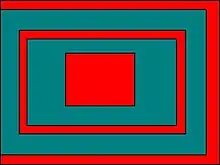Garad Adan Bin Kooshin
Garaad Adan Bin Kooshin, referred to as Prince Adan (Arabic: خراد ادن بن كوشن ) was the supreme Garaad of the Somali Geri Koombe, a wider branch of Darood and a Dervish statesman. His life was documented by British explorer Richard Burton in his expedition to East Africa. Garaad Adan belonged to a hereditary line of succession predating the Adalite period. He was described by Burton as a powerful leader. Adan shared kin with the emirs of Harar and conducted trade trade with the emirs.
| Garad Adan Bin Kooshin | |
|---|---|
| خراد ادن بن كوشن | |
 Dervish Statesman | |
| Born | 1813 |
| Spouse | Dahabo |
| Issue | Sherwa ibn Adan bin Koshin |
| Dynasty | Ishaaq Hassan Awbarre |
| Father | Kooshin |
| Religion | Islam |
| Occupation | Dervish Statesman |
Life
Garad Adan was the supreme Garaad of Geri Koombe. He was well documented by British explorer Richard Burton who went to East Africa and then traveled to Harar. He was the first European to arrive at Harar. In his time there he wrote extensively about Garaad Adan.
He was the brother-in-law of the Gadabursi tribe. His son's name was Sherwa. Garad Adan was also a political figure.He was a part of the Dervish movement led by Poet Sayid Mohammed Abdullah Hassan
Burton noted that Garad Adan exercised direct authoritative power:
The Gerad Adan was powerful, being the head of a tribe of cultivators, not split up, like the Bedouins, into independent clans, and he thus exercises a direct influence upon the conterminous races[1]
Upon arriving to Harar Burton worried about Garad Adan since the route to Harar was frequently attacked by Somali warriors. Eventually Burton was attacked and scarred on his left cheek. Burton wrote:
The greatest danger we had run was from the Garad Adan, a fact of which I was not aware till some time after my return to Berbera: he had always been plotting an avanie which, if attempted, would have cost him dear, but at the same time would certainly have proved fatal to us.
Burton noted that the Karanle clan were under the protection of Garad Adan. Burton also highlighted how the Karanle had no Garad of their own and that Garad Adan ruled them.[2]
The Karanle has been noticed in a previous chapter. Of the Usbayhan I saw but few individuals: they informed me that their tribe numbered forty villages and about 1000 shields; that they had no chief of their own race, but owned the rule of the Girhi Their principal clans are the Rer Yusuf, Rer Said, Rer Abokr, and Yusuf Liyo[2]
Descriptions
Adan was hostile to foreigners. Burton asked permission to meet Garad Adan, who then invited Burton to one of his villages. Burton wrote about the Geri Koombe clan:
He wrote:
The Girhi or "Giraffes" inhabiting these hills are like most of the other settled Somal, a derivation from Darud and descended from Kombo. Despite the unmerciful persecutions of the Gallas, they gradually migrated westwards from Makhar, their original nest, now number 5000 shields, possess about 180 villages, and are accounted the power paramount. Though friendly with the Habr Awal, the Girhi seldom descend, unless compelled by want of pasture, into the plains[3]

Burton also reported that Garad Adan had been at war with the Gadabursi tribe. He subsequently plundered them, but both clans eventually agreed to peace Burton:
Some years ago Adan plundered one of Sharmarkay's caravans; repenting the action. he offered in marriage a daughter of his but she died just before[4]
See also
- Mohammed Abdullah Hassan - Leader of the Somali Dervish movement.
- Haji Sudi- One of the founding members of the Dervish movement and the chief military commander.
- Sultan Nur- Sultan of the Habr Yunis clan and one of the founding members of the Dervish movement and the Dervish Sultan.
- Hasna Doreh – wife of Mohammed Abdullah Hassan.
- Ismail Mire - A soldier and a bard .[5]
- Bashir Yussuf – Somali religious leader who fought against the British alongside Mohammed Abdullah Hassan.
References
- Richard, Burton. first footsteps in east africa. p. 359. ISBN 978-2-8199-0900-2.
- Richard, Burton. first footsteps in east africa. p. 362. ISBN 978-2-8199-0900-2.
- Sir Burton, Richard Francis (2010). First footsteps in East Africa. [Place of publication not identified]: PubOne.info. ISBN 978-2-8199-0900-2. OCLC 1100902383.
- Richard, Burton. First Footsteps in East Africa, Or, An Exploration of Harar. p. 276. ISBN 978-2-8199-0900-2.
- notes on Dervish personalities. ISMAY: 3/1/22.1919